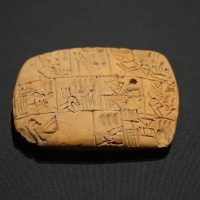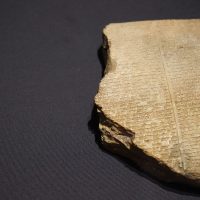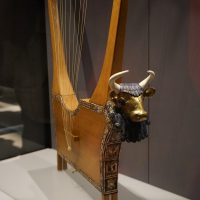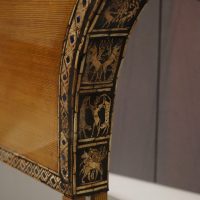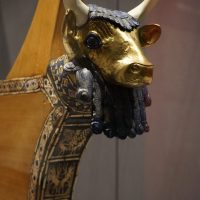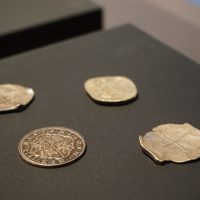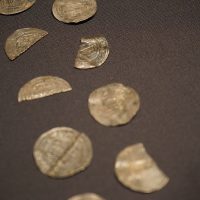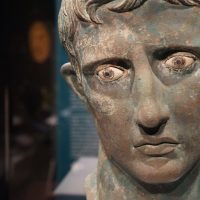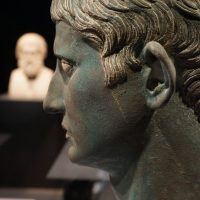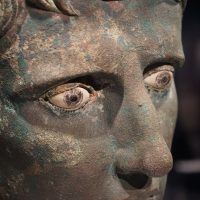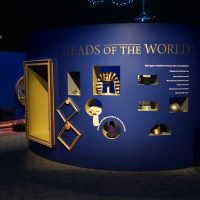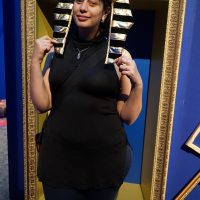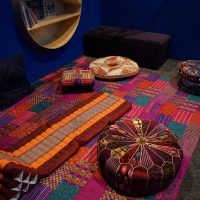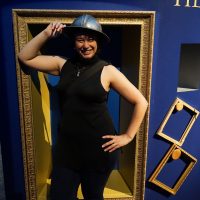When I heard the British Museum’s exhibition A History of the World in 100 Objects was coming to Canberra, Australia I could not stop smiling. Since its arrival, I have visited three times and plan more visits in the near future. In this post, I’m going to take you on a short tour of the exhibition, showing off my favourite objects.
There are nine parts in this exhibition, with a 101 item in ‘the world today’:
- Beginnings (2,000,000 years ago to 2500 BCE)
- The First Cities (3000-700 BCE)
- Power and Philosophy (700 BCE-100 CE)
- Ritual and Belief (1-800 CE)
- Trading and Invading (300- 1100 CE)
- Trading and Invading (300- 1100 CE)
- Innovation and Adaptation (900-1550 CE)
- Encounters and Connections (1500-1800 CE)
- The World of our Making (1800 CE to today)
- The World today
Most of my favourite items are ancient, but I must admit I got super excited to see the first ever ‘WiFi machine‘ in this exhibition. I even instilled a suitable amount of awe in some kids who were looking at the machine with me. Without this invention, WiFi wouldn’t be the commercial product we all use and love today!
As I moved into the exhibition, I was first drawn to two clay tablets. It wasn’t the beautiful sarcophagus or the alien stone age tools that drew me in, it was clay tablets with ancient writing. On the Early Writing Tablet, the text is administrative and talks of rations and beer. The second tablet was one of the Flood Tablets – the Epic of Gilgamesh from the library of Assyrian King Ashurbanipal. You cannot imagine my joy at seeing this item. I always thought I’d have to travel overseas to see one of the famous flood tablets and to see it right there, in a museum 10mins drive from my home was overwhelming.
- Early Writing Tablet
- Flood Tablet
Earlier this year I wrote a blog post about ancient music so when I saw the Queen’s Lyre I knew exactly what it was. This Lyre was found in Queen Puabi tomb, excavated from the ancient city of Ur. The detail on the Lyre is amazing you can clearly see images of people and the Royal Standard of Ur.
- Queens Lyre
- Close-up of details on Queens Lyre
- Close-up on bull’s head
I have been collecting coins for many years. So I took great delight in seeing the variety of coins on display in this exhibition, from pieces of eight to the Alexander Coin. On the Alexander Coin, Alexander has rams horns on his head, symboling his “claim that he was the son of the Egyptian god Ammon”. The ways the ancients used coins and portraiture to display power and a right to rule is quite fascinating.
- Pieces of Eight
- Alexander Coin
- Vale of York Hoard
Speaking of portraiture to display power and a message to all who saw it, there was one item that kept me captivated for over 40mins, and that is the Head of Augustus. Since studying ancient history, it has been the story of Augustus, his rise to power and transformation into a living god that has kept me in the Classical era. To see the emperor’s face in front of me was a dream come true. The history of this particular head is interesting. It was decapitated and moved by an invading army from Meroë (modern-day Sudan). Then buried under temple steps as an insult to Augustus. This act of defiance ironically kept the head well preserved till it was discovered in 1910.
- Emperor Augustus
- Emperor Augustus and bust of Sophocles in the background
- Emperor Augustus
Another item I have read about over the years is the Lewis Chessmen. I first saw some of the pieces as part of the Vikings exhibition at the British Museum in 2014. At the time I had a two-year-old with me who wasn’t as impressed with the exhibition as his Mum, so I didn’t get to see as much of the chessmen as I would have liked. This time around I studied them intently!
I was quite impressed to see a kids section within the exhibition. It includes a reading corner, drawing table, puzzle wall and an imaginative play area with dress ups.
- Entrance to kids section
- Me playing dress ups
- Reading corner
- Me playing dress ups
I loved that this exhibition had items from all four corners of the world, and even included some modern-day innovations such as plastic and solar lighting. If you have a chance to see this exhibition, I highly recommend it.

